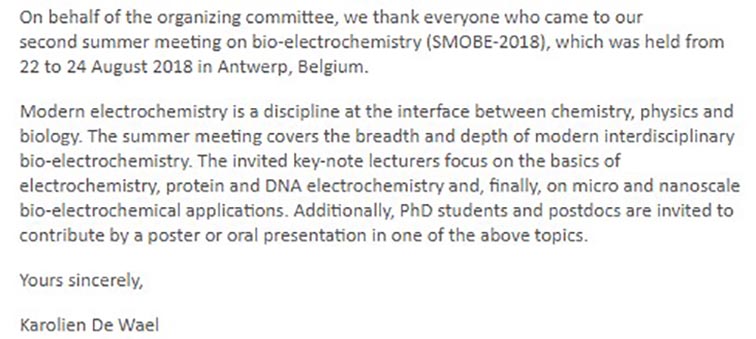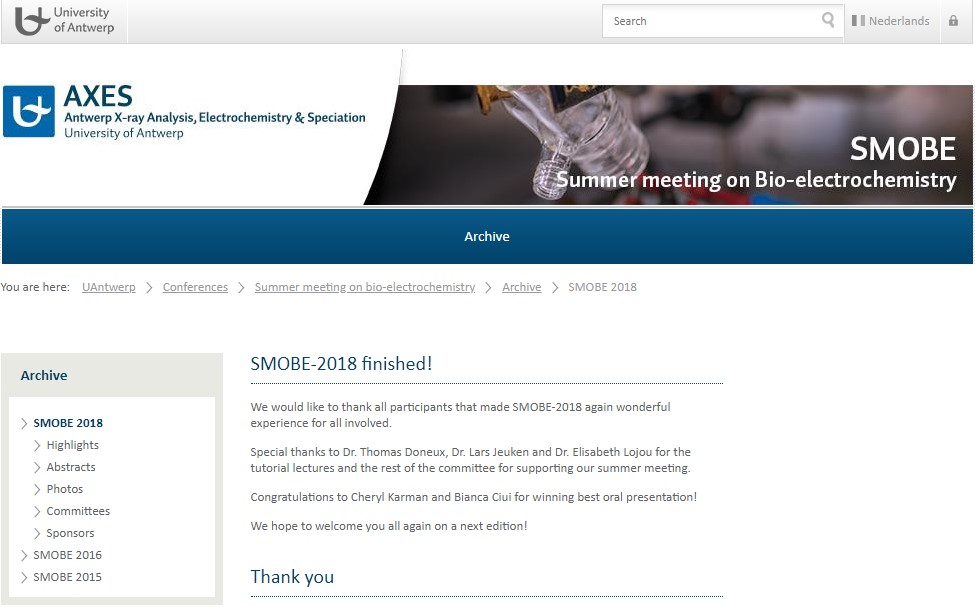A protein-based electrochemical biosensor for facile and sensitive detection of osteoporosis biomarkers.

A protein-based electrochemical biosensor for facile and sensitive detection of
osteoporosis biomarkers
Paula Lopes1*, Patricia Khashayar1, Mieke Adriaens2, Jan Vanfleteren1
1Center for Microsystems Technology (CMST), Ghent University and IMEC, Technologiepark 15, 9052 Gent-Zwijnaarde, Belgium; 2Department of Chemistry, Ghent University, Krijgslaan 281 S12, 9000 Gent, Belgium
*paula.lopes@ugent.be
Bone loss and osteoporosis is a serious health problem worldwide. Statistically, one in three women and one in five men over 50 years of age will experience osteoporotic fractures in their life [1]. This reality represents an enormous burden on healthcare systems worldwide and highlights the critical need to improve early diagnosis of bone loss and the development of rapid and inexpensive detection systems as well as treatment monitoring.
At present, electrochemical biosensors are widely used in medical practice, as they offer extremely sensitive and accurate yet simple, rapid, and inexpensive biosensing platforms for diagnosis. In this context, we are developing a proteomic sensor, which does not require preparation and purification sample steps, to be integrated in a point-of-care device, for bone turnover markers (BTMs) detection [2]. The development of a label-free biosensor for the detection of C-terminal telopeptide from type-1 collagen (CTx-I), will be discussed.
Sulfo-LC-SPDP cross-linker and anti-CTx-I antibody are mixed, so that the amino group of anti-CTx-I antibody reacts with the succinimidyl group via a NHS reaction and immobilize on the electrode surface thereafter. Nonspecific interactions are prevented by using BSA as a passivating agent. The sensing layer is prepared using a gold screen printed electrode (d=1.6 mm) and is characterized using differential pulse voltammetry and electrochemical impedance spectroscopy. Optimization studies have shown successful detection of CTx-I on artificial solutions within the relevant clinical range, 100‑2500 pg mL-1.
This sensor can be extended to other BTMs in a multiplex detection system with the potential to constitute a breakthrough in the current medical care settings of osteoporotic patients, by contributing to an early diagnosis and screening of the disease.
The work is funded by the European Commission in the framework of the H2020-NMBP-X-KET-2017- “PoCOsteo” Research & Innovation Action (Grant Agreement number 767325) and is supported and advised by the International Osteoporosis Foundation (IOF).
Literature:
[1] Hernlund, E.,et al. Arch Osteoporos (2013) 8: 136
[2] Khashayar, P., et al., Micromachines (2017) 8:133

